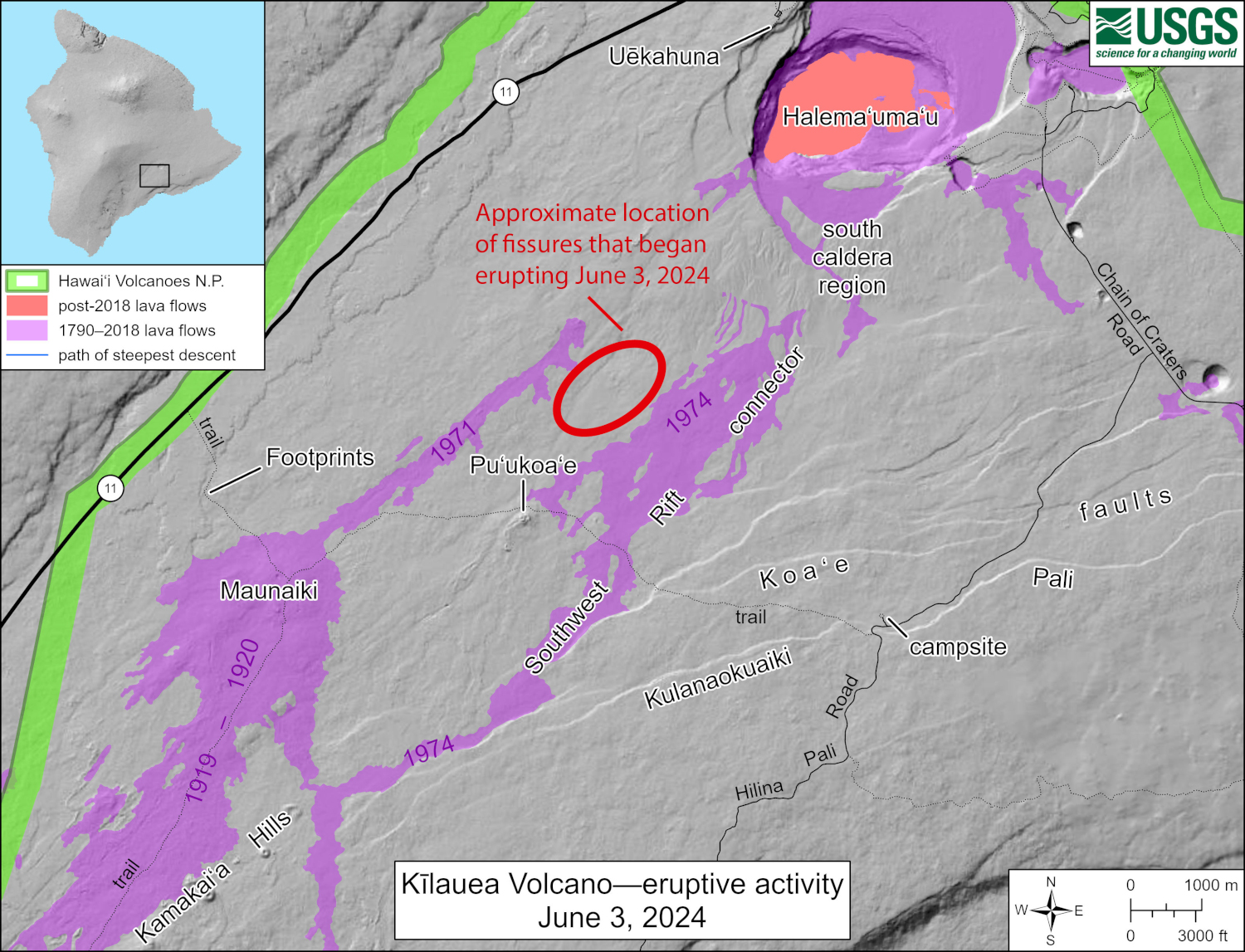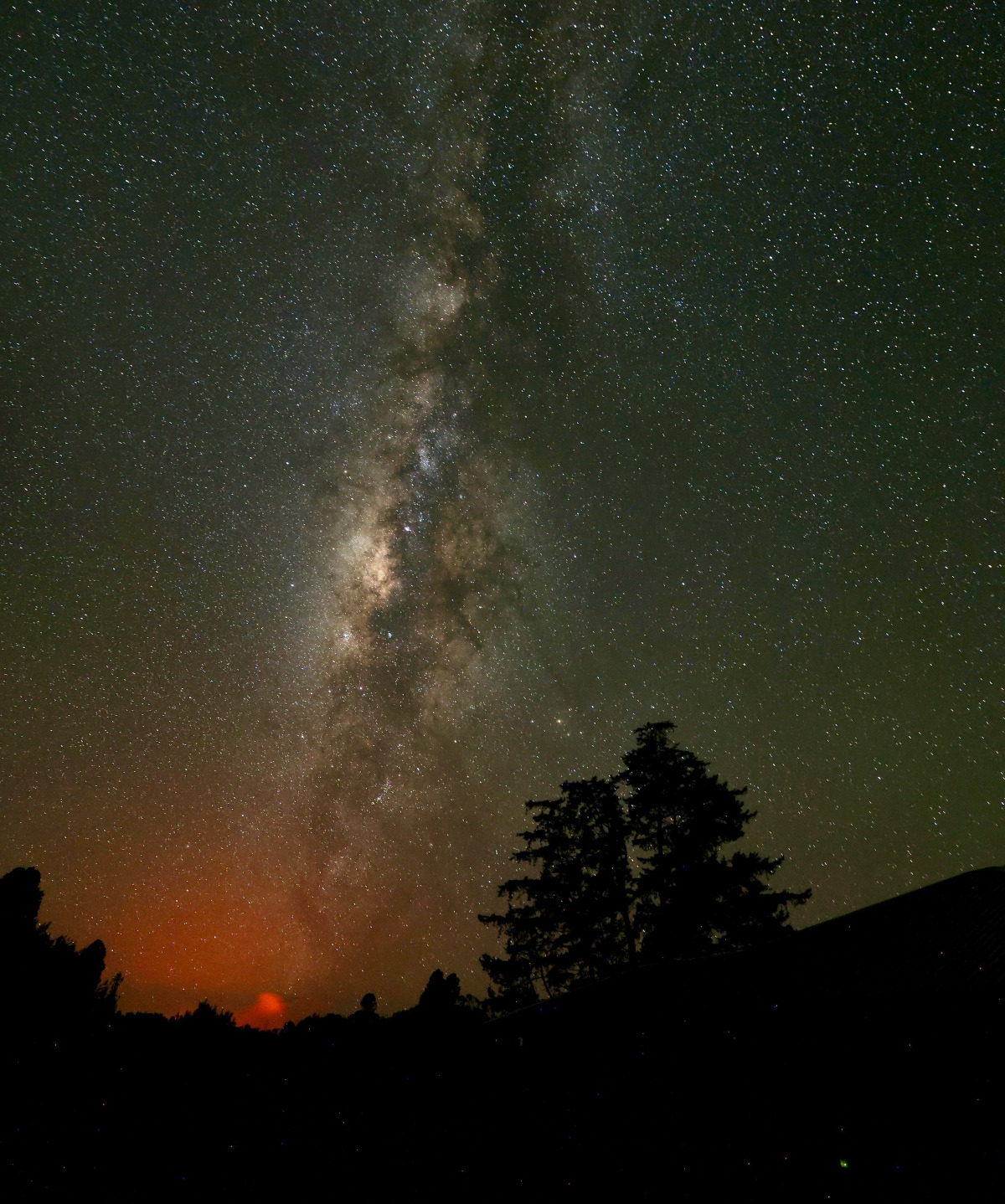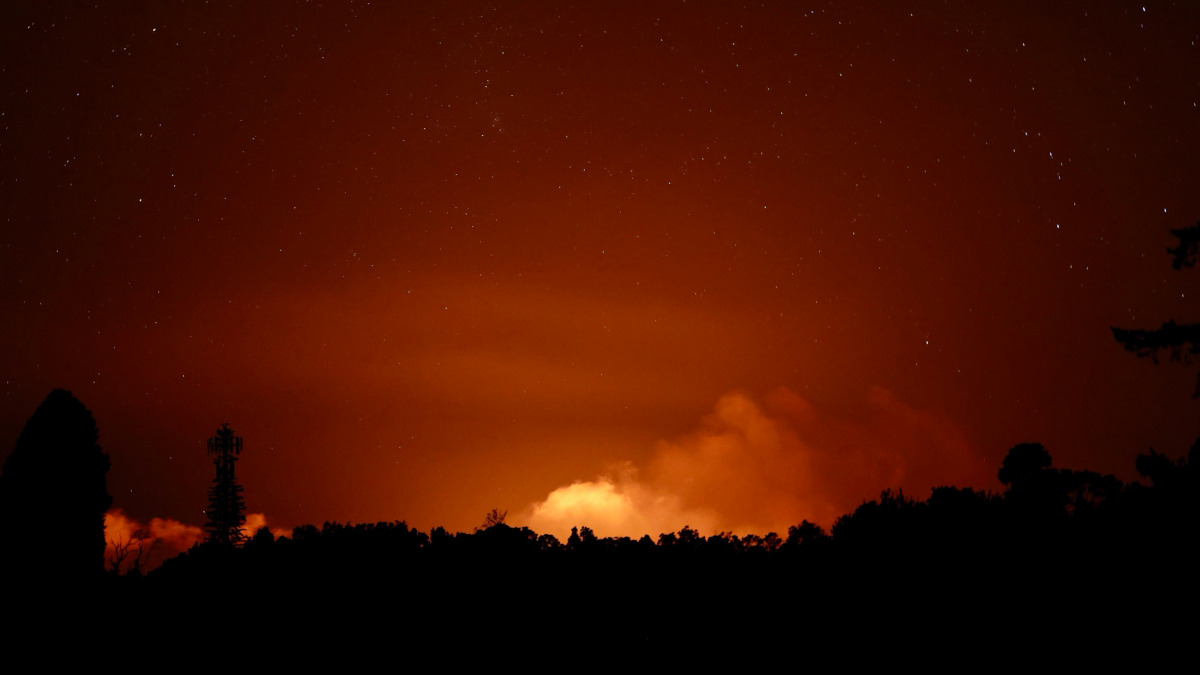
USGS: “This reference map depicts the approximate location of fissure vents that began erupting from Kīlauea Southwest Rift Zone at approximately 12:30 a.m. HST on June 3, 2024. The most recent eruption in this region was during December 1974, which lasted only about 6 hours. At this time, it is not possible to say how long the eruption will last.”
(BIVN) – Kīlauea began erupting after midnight on the Southwest Rift Zone, raising the USGS Volcano Alert Level from WATCH to WARNING and the Aviation Color Code from ORANGE to RED.
Devastation Parking Lot and the Keanakākoʻi area in Hawaiʻi Volcanoes National Park were closed prior to the eruption, and so far no new closures have been announced.
The USGS Hawaiian Volcano Observatory posted this activity summary at 2:11 a.m. HST:
Kīlauea volcano is erupting. A new eruption began at approximately 12:30 a.m. HST on Monday, June 3, likely about a mile (1-2 km) south of Kīlauea caldera and north of the Koa’e fault system and Hilina Pali Road, within Hawai’i Volcanoes National Park.
Accordingly, the USGS Hawaiian Volcano Observatory (HVO) is raising the Volcano Alert Level for ground-based hazards from WATCH to WARNING and the Aviation Color Code from ORANGE to RED.
Glow is visible in webcam imagery, indicating that lava is currently erupting from fissures. The most recent eruption in this region was during December 1974, which lasted only about 6 hours. At this time, it is not possible to say how long the eruption will last.

USGS: “During the early morning hours of June 3, 2024, the night sky was illuminated by the glow of new eruption south of Kīlauea summit caldera. In this image, taken with a prolonged exposure time, the Milky Way is also visible.” (USGS image by D.A. Phillips)
HVO continues to closely monitor Kīlauea for signs of increasing or decreasing activity. Should volcanic activity change significantly, a new Volcanic Activity Notice will be issued.
Hazards are present on Kīlauea and are described below. Residents and visitors should stay informed and follow County of Hawai‘i and Hawaiʻi Volcanoes National Park guidelines.
Rates of seismicity and ground deformation beneath the East Rift Zone and Southwest Rift Zone remain low. Current activity is restricted to the summit region.
Hazard Analysis:
Kīlauea summit eruptive activity over the past several years has occurred at the base of Halemaʻumaʻu crater and on the downdropped block, within the closed area of Hawaiʻi Volcanoes National Park. During Kīlauea summit eruptions, the high level of volcanic gas—primarily water vapor (H2O), carbon dioxide (CO2), and sulfur dioxide (SO2)—being emitted is the primary hazard of concern, as this hazard can have far-reaching effects downwind. Passive volcanic degassing can occur from within Halemaʻumaʻu crater even during periods of no eruptive activity. As SO2 is released from the summit, it reacts in the atmosphere to create the visible haze known as vog (volcanic smog) that has been observed downwind of Kīlauea. Vog creates the potential for airborne health hazards to residents and visitors, damages agricultural crops and other plants, and affects livestock.


by Big Island Video News5:26 am
on at
STORY SUMMARY
HAWAIʻI VOLCANOES NATIONAL PARK - The Volcano Alert Level was raised to WARNING as a new eruption began on the Kīlauea Southwest Rift Zone.